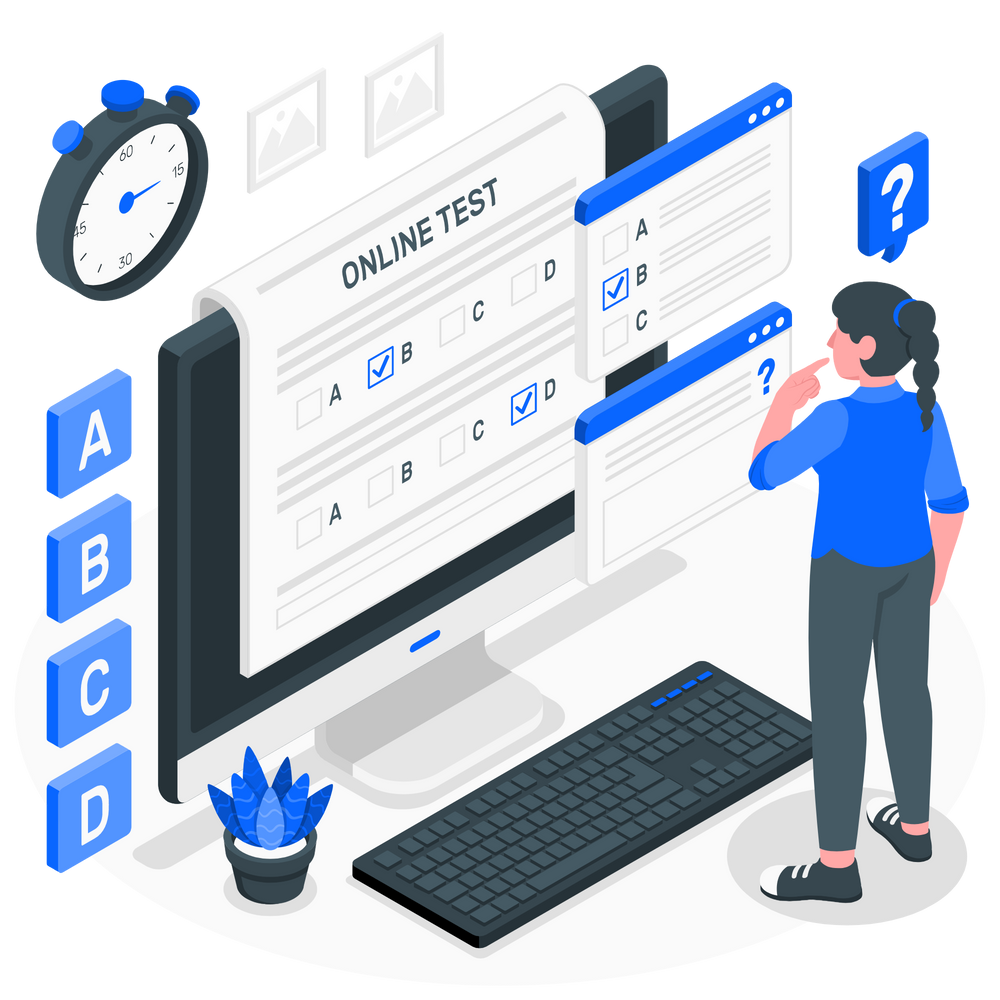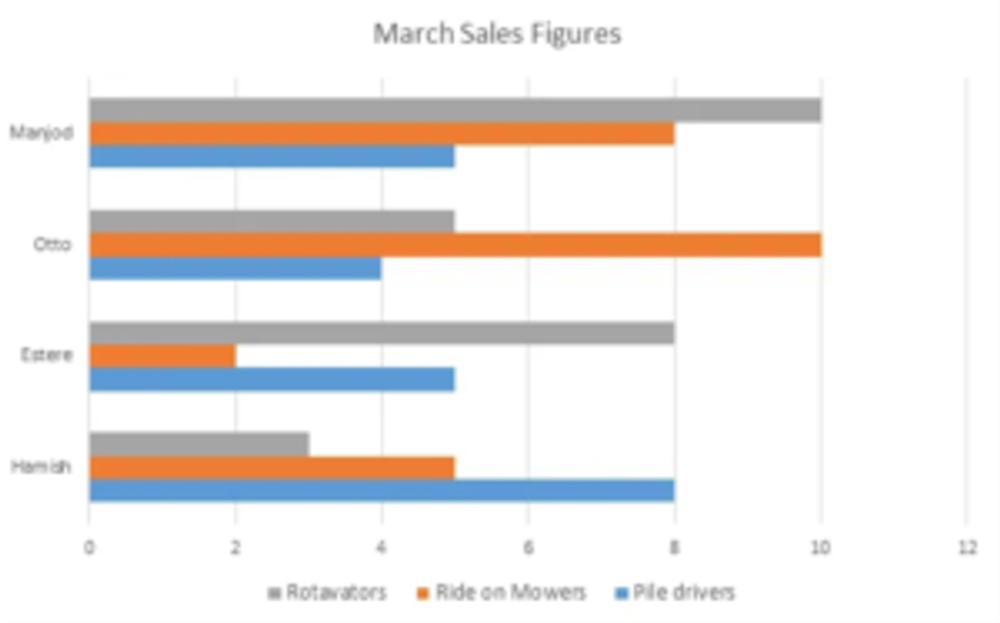McKinsey uses the SHL test as a pre-interview screening test. The test is computer-based, with 48 questions done in 44 minutes, assessing the candidate on numerical and verbal reasoning skills. Compared to the PST, the SHL allows calculator use and asks less challenging questions, however, it monitors the test-taking process whereas the PST relies on end results only.
This article is going to give an overview of the test structure, along with detailed-explained examples and a guide to ace the McKinsey SHL test.
Table of Contents
What is the McKinsey SHL test?
What is the SHL test?
SHL test is the computer-based standardised assessment for organisations to evaluate their applicants of multiple test areas: numerical, verbal, logical, and more. The test format is usually multiple-choice which takes 35 to 45 minutes to complete.
How does McKinsey use the SHL test?
SHL test is computer-based, normally given at proctored sites. However, for logistical reasons, McKinsey does allow candidates to take the test from home as an alternative.
McKinsey uses a slightly customized version of the SHL test as one of the screening tests in its recruitment process, along with Problem-Solving Test (PST) and Problem-Solving Game. However, both tests are being replaced by the game.
The questions in the test are ordered randomly with each question being time-counted. While there is no time limit for each question, the time you use to deliver each answer will factor into the final scores.
McKinsey PST vs SHL
The McKinsey PST and the SHL test differ in 4 crucial points:
(1) The PST is reportedly more difficult than the SHL test;
(2) PST’s grading method is a percentage, whereas the score of SHL is a percentile, meaning your score also depends on other candidates’ performance;
(3) the SHL test allows the use of calculators while the PST does not, and
(4) the SHL is computer-based while PST is paper-based.
Are calculators allowed in the McKinsey SHL?
SHL test is a calculator-allowed test. Candidates should utilize this allowance by getting familiar with calculator models and training to speed up their calculator use. However, mental math training is still important, since some simple numerical reasoning questions can be answered faster with mental math than with a calculator.
Furthermore, mental math is a crucial part of case interview prep, and the consulting job is bound up with numbers in almost every session such as brainstorming, client meetings, expert interviews, or quantitative analyses. Therefore, an instinct in mental math is highly required to process qualitative data accurately and immediately.
McKinsey SHL passing score / cut-off rate
The passing score for the McKinsey SHL is around 85%, according to our estimations using test-taker reports to be chosen for the next recruitment stage – in other words, the passing rate for the McKinsey SHL is roughly 15%. This is considerably higher than the PST, which has an estimated passing score of around 70%.
Also unlike the PST’s simple scoring system based on the number of correct answers, the SHL test is graded using norm groups and percentile scores. Norm groups is a type of benchmarking, used to compare how good a score is to the rest of the examined group. Percentile score is the grade where a certain percentage of scores fall below that number. For example, Percentile of Candidate X is 82 means Candidate X performs better than 82% of the candidates. In other words, they are in the top 18%.

McKinsey SHL question types
Verbal reasoning questions
Read more: How to Pass SHL Verbal Reasoning Tests?
The Verbal Reasoning part of the McKinsey SHL consists of 30 questions in 19 minutes (you have roughly 38 secs for each). They are a set of short passages with 3 to 5 follow-up questions. Candidates have to analyse data to identify whether subsequent statements are “True”, “False”, or “You cannot say” based on the test.
The test purpose is to highlight reading comprehension – the ability to digest written information, and verbal critical reasoning, the ability to apply logical thinking to identify the right answer based on the text provided.
Here are a few examples of verbal reasoning questions:
EXERCISE
Many retailers find it useful to employ temporary workers in the run-up to Christmas. This ensures that they have enough employees in the shops to cover the very busy Christmas shopping period. Using temporary workers is a cost-effective way of meeting seasonal demand as temporary workers are usually paid at a fixed rate without the usual entitlement to paid holidays. However, one challenge of using temporary workers is ensuring that all staff provide adequate levels of customer care and customer complaints tend to increase in the Christmas shopping period.
Question 1: Temporary workers are given the same entitlement to paid holidays as permanent staff.
Question 2: Retailers find the Christmas shopping period particular busy.
Question 3: Temporary workers are provided with customer care training before they start work.
Question 4: Customer complaints increase during the Christmas shopping period because of the temporary workers.
Answer - Question 1
False.
The passage clearly states that ‘temporary workers are usually paid on a fixed rate without the usual entitlement to paid holidays.
Answer - Question 2
True.
The passage says that retailers need additional employees to ‘cover the very busy Christmas shopping period’.
Answer - Question 3
Cannot say.
Although the passage talks about customer care it is impossible to say whether temporary workers are provided with customer care training.
Answer - Question 4
Whilst the passage shows that both customer complaints and the number of temporary workers increase during the Christmas shopping period there is no evidence provided of a causal relationship.
Here at MConsultingPrep, there are hundreds of questions with elaborate explanations and practical study guides for you to try out! Let’s start with some of our free verbal reasoning questions!
Numerical reasoning questions
Read more: How to Pass SHL Numerical Reasoning Tests?
The Numerical Reasoning part of the McKinsey SHL has 18 questions designed to complete in 25 minutes (you have approximately 83 secs for each). These questions present facts and figures in statistical tables, asking candidates to perform calculations such as basic arithmetic, fractions, percentages, ratios, and conversions.
The test is in multiple-choice format, used to assess math and critical thinking of interpreting and analysing quantitative data.
Here are several instances of numerical reasoning questions:
EXERCISE
Take a look at the following Sales Figures for March and then answer the questions below.

Price List:
Rotavators = £120
Ride on Mowers = £400
Pile Drivers = £380
Question: Which member of the Sales Team had the highest total sales value in March?
A. Manjod
B. Otto
C. Estere
D. Hamish
Answer
Option A.
To work this question out you need to multiply each team member’s sales by the price of the product and then add them together.
For example, for Manjod:
Rotavators (10 x £120 = £1200) + Ride on Mowers (8 x £400 = £3200) +Pile Drivers (5 x £380 = £1900)
= £1200 + £3200 + £1900
= £6300
Fortunately, MConsultingPrep provides 500+ questions with detailed explanations and practical study guides to help you deal with any level and type of numerical reasoning tests, including the taxing Data Interpretation. Here are some free numerical practice questions. Let’s give it a try!
How to prepare for the McKinsey SHL?
SHL study plan
- Practise mental math and numerical reasoning. Focus on consulting/business-context math and mental calculations. It does not take too much time to train quick and accurate mental calculations. Here’s a tried-and-true mental math method I developed and used at McKinsey.
- Practise fast reading and verbal reasoning. There are 2 techniques that help you read fast: (1) “Trackers and Pacers” to speed up and smooth the eye movements, and (2) “Perceptual Expansion” to make full use of the eye’s ability to see to the sides by focusing on one centerline of the passage. For more explanation and examples, read my article about the method and your reading pace will definitely accelerate.
- Perform full mock tests: After a period of practising, this is time to actually be familiar with the test format and working under pressure to enhance time management. Ideally, your mock tests should be harder, done in a shorter time, and aim high. According to the average allotted time above, I recommend doing the verbal test in 15 mins and the numerical test in 22 mins. The leftovers are for checking and retaking skipped ones. Aim 90 as the current SHL test passing benchmark is 80. Hard practise easy game. There is a massive amount of free practise questions, you can go check the SHL Test site.
McKinsey SHL tips
#1. First and foremost, clearly read the instruction. Despite of thousand times you spend practicing SHL test, it is still vital to read again in case there are any new changes.
#2. Normally, the test instruction is already adequate and straight to the point; however, if you have any questions, just ask if needed.
#3. There is plenty of time for completing example questions, take the chance as an activation part to help familiarise yourself with the format.
#4. Don’t forget to check the technical conditions, such as internet connection, popup blockers, or firewalls, and ensure there will be no IT errors while you are taking the test.
#5. Time management is key. Keep calm and to the test as if you are taking it at home, under time pressure. If you are definitely sure about it, move to the next immediately, there is no time for shilly-shally. If you are stuck on a difficult one, move on and retake it after you finish it all.
#6. Make the most of calculator. This is one of the rare cases when calculator is allowed in a test, so make use of it. Get familiar with the model of your calculator and speed up the typing pace.
/filters:quality(75)//case_thumb/public/1699589977462_aptitude_tests_package_4_x.png)